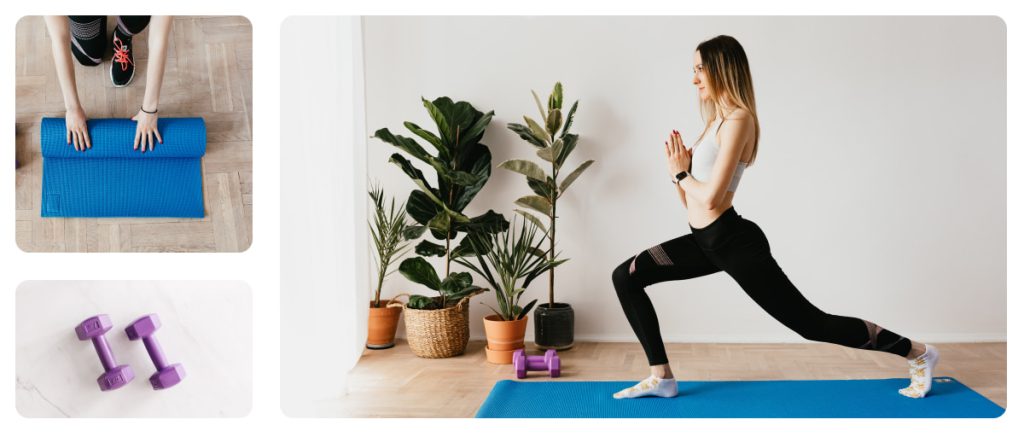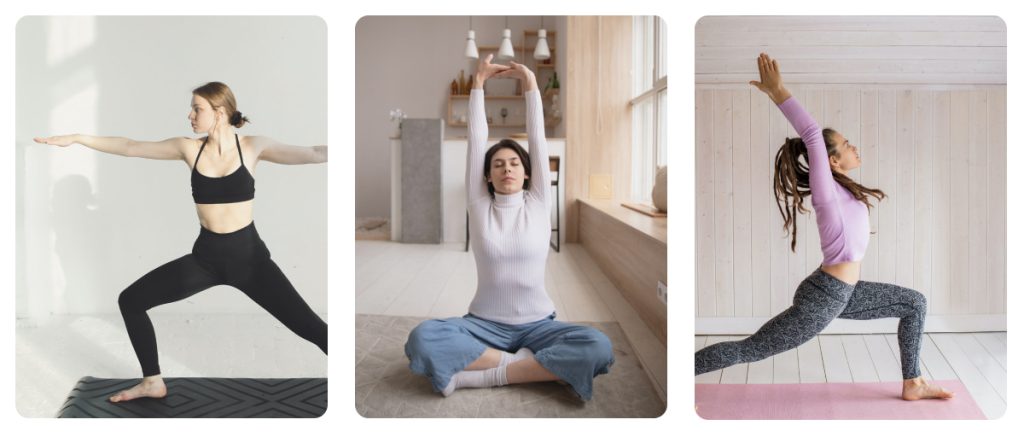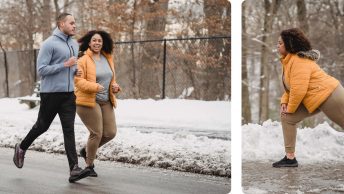Staying healthy and exercising at home can help you have more energy, be happier, and even make time feel like it’s going by slower. In this article, we’ll be talking about the basics of starting to work out from home, including what you should avoid and how to plan your own routine.
Why work out from home?
It might be a better idea to go to the gym or to see a personal trainer, but for some people, that’s simply not possible. Developing workout routines for all levels that don’t require equipment at home or to go to a fitness studio makes healthy living more accessible.
In a 2016 study, researchers found that working out at home helped to decrease the risk of chronic disease and that over the next decade, the number of deaths due to chronic disease is predicted to go up by 17%. It’s important that we take action now to keep people healthy and offer both guides and information that makes working out accessible for everyone.
Getting started
When you first decide to start working out from home, you’ll need to consider the basics. It’s a good idea to start off slowly and look at various stretching exercises and do this two to three times per week for about an hour until your body adapts to moving.
If you decide to start with YouTube videos of home workouts, it will probably be too much if you’ve been living a sedentary lifestyle. The body takes time to adapt to new routines, and your muscles will thank you for the preparation in the long run.
Overtraining in beginners can lead to insomnia, headaches, increased pulse when waking up, and fatigue. Many of the popular beginner’s workout videos for exercise don’t take into account the time the body needs to adapt and create workouts that can lead to injury.
How to design a personalized workout
Once you feel like your stretching routine has been helping, it’s a good idea to invest in a mirror. One of the major benefits of working out with a personal trainer is that they’ll be there to correct your form and also judge if you’re pushing yourself too hard or too fast.
By purchasing a mirror and correcting your own form while doing exercises, you can reduce the time you stretch to about 10-15 minutes (depending on your workout and health) and begin adding other exercises to that 60-minute time slot two to three times per week.
It’s a good idea to split your time between stretching, cardio, and strength. Each type of exercise is going to offer you different benefits, and by combining them in a routine way, you can see the benefits of each on your overall health. Experienced athletes might push one of the three above for specific results like running faster during a marathon, lifting heavier weights, etc. Most of us, however, are not experienced athletes and should just focus on improving our overall health.
How to stretch properly

Most people do static stretching, where they hold the stretching position for about 30 seconds to stretch their joints and muscles. There are also dynamic and pre-contraction stretching that might be interesting for you as well.
Static stretching
If you don’t plan on doing high-intensity workouts, static stretching can be a good way to start your exercise or help you build up muscle flexibility to begin exercising regularly. There are many good lists with physiotherapy exercises to start you off. You can check out this guide to static stretching from the Newcastle Injury Clinic for more.
Please remember not to follow workout videos on YouTube as many of them are from people without training or knowledge of physiotherapy. These may also not be ideal for your level of fitness or body type, so it’s best to be careful.
Dynamic stretching
If you plan to do high-intensity training, you should think about pairing a few static stretches with dynamic stretches to prepare your muscles and your mind for the workout to come. Dynamic stretches involve more movement than static stretches, with examples like arm and hip circles. High-intensity workouts include more advanced exercises that take a bigger toll on your body, like HIIT training or running.
You can see this guide on dynamic stretching from healthline for more information on starting.
PNF stretching
PNF stands for Proprioceptive Neuromuscular Facilitation stretching and is activated when a muscle is pushed past its limit and then relaxes in order to avoid injury. This is a more extreme version of static stretching that should only be performed with the help of a physical therapist.
You can learn more about if PNF stretching is right for you in the PNF stretching guide from healthline.
How to do cardio at home

We’ll keep in mind that most people aren’t ready to spend upwards of €500 on a treadmill to start getting into cardio. You’ll have a few options to help get your heart rate up while exercising, but remember that starting a workout plan can be quite difficult for your body, so it’s always a good idea to speak with your doctor and start slowly.
Jump rope
Your downstairs neighbors might not be happy about this one, but jump rope is a great way to raise your heart rate without having to spend too much on equipment. It’s recommended to do cardio for about 15 minutes in order to see the benefits, but if you’re not capable of that yet, it’s good to start working towards the 15 minutes slowly.
HIIT (High-intensity interval training)
This is where you might want to be careful. There are a few really good physiotherapists talking about HIIT on YouTube, but you’ll need to make sure you find one with credentials, or you could end up doing an exercise with someone who knows little to nothing about physical wellbeing.
While they’re not as glamorous as some of the fitness gurus out there, the National Axial Spondyloarthritis Society is a qualified institution helping people get into HIIT training.
Dancing
If you’re dancing quickly enough and not just shuffling around, you can use dancing as a good way to start increasing your physical fitness. The game Just Dance is a popular way that many people have worked dance and fun into their physical fitness journey.
Strength training
The last and most physically demanding exercise you can do for strength training. We recommend spending a few weeks just focusing on stretching, then on cardio, and finally thinking about tackling strength training because of how physically demanding it can be.
To get started, you can see the guide from healthline on strength training.








